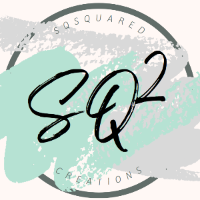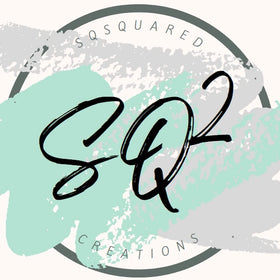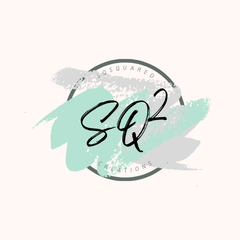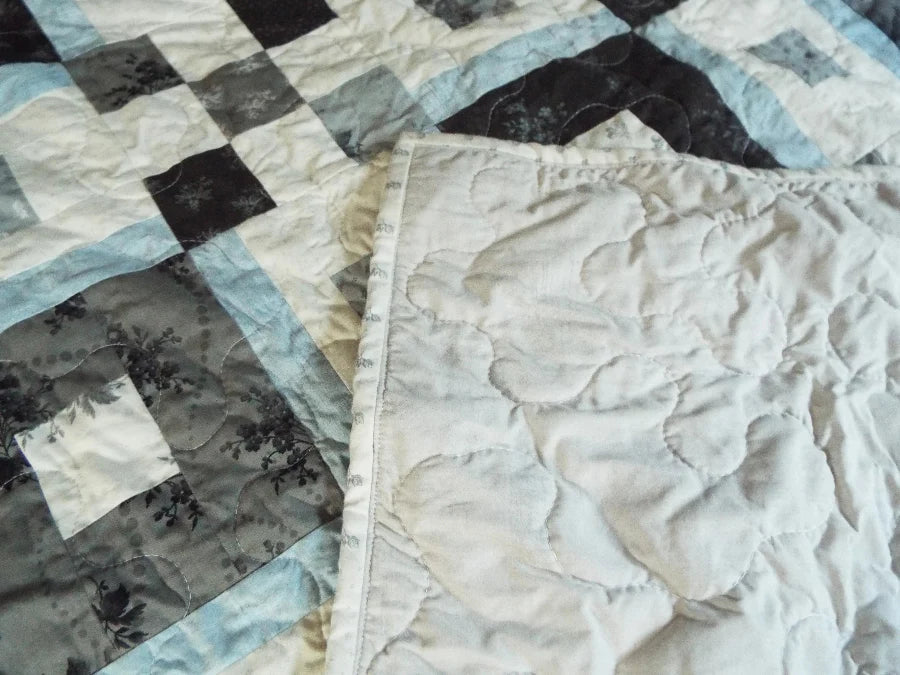I get asked this question a lot — at markets when someone sees a price tag, and even online, where searches like “Are more expensive quilts worth it?” come up again and again. It’s a fair question: when you see quilts priced anywhere from under $100 to several thousand, how do you know if the higher price is really worth it?
The truth is, sometimes yes, sometimes no. Let’s look at what goes into quilt pricing so you can decide with confidence.
What Goes Into Quilt Pricing
Materials. Fabric is only part of the story. Many heirloom quilts use 100% cotton fabrics, batting, and thread, which breathe well and age beautifully. But not every handmade quilt sticks to these standards — cotton/poly blends or polyester thread can behave differently when washed.
Batting (the middle layer) makes just as much difference. Options like cotton, bamboo, or wool offer natural warmth and breathability. The highest quality versions are needle-punched — meaning fibers are mechanically interlocked — with no added glues or resins. Lower-end battings may contain adhesives to hold fibers together, which can make a quilt stiffer and shorten its lifespan.
Stitching: Hand vs. Machine. Hand-stitched quilts carry incredible artistry and time investment. Machine-stitched quilts (like mine) are also high-quality, just made with different methods. What matters most is consistency: straight, even stitches that will hold through decades of use.
Labor and Design. A quilt is more than fabric — it’s hours (sometimes weeks or, in the case of hand-stitched, months) of cutting, piecing, quilting, and binding. More intricate designs and careful fabric curation increase both the time investment and the uniqueness of the quilt. But it’s important to remember: not every quilter works at the same pace. Some enjoy a slow, meditative process; others develop efficient methods that allow them to complete quilts more quickly. Time is one factor in value, but it’s not the only one — materials, consistency, and craftsmanship matter just as much, if not more.
Authenticity. Amish quilting carries a long tradition of craftsmanship, and many of those quilts are built to last for generations. In some cases, Amish families partner with trusted sellers to bring their work to a wider market — whether that’s quilts, furniture, or food. The challenge is that the word “Amish” is also used loosely online as a marketing label, even for quilts that weren’t made within those communities at all. If authenticity matters to you, look for a clear story of who made the quilt and how it reached you. That connection is often as valuable as the quilt itself.
When Higher Prices Do Reflect Value
-
Longevity. A quilt made with quality fabrics, natural batting, and consistent stitching isn’t just cozy for a season — it can last for decades, sometimes generations. The cost spread over that lifespan often makes it the better value in the long run.
-
Comfort. Natural fibers like cotton, bamboo, or wool breathe better, regulate temperature, and soften with use. That means a quilt you’ll actually reach for again and again — not one that ends up at the back of the closet.
-
Story. Not every quilt begins with a dramatic tale — sometimes the maker simply loved the fabric or pattern. But once a quilt is gifted, used, or passed down, it becomes part of your story. That connection is something mass-produced quilts can’t replicate.
-
Sustainability. Artisan quilts are slow-made, often in small batches, with materials chosen for durability. They avoid the mass-production cycle of waste and replacement, making them a thoughtful choice for the planet as well as the home.
When Expensive Isn’t Worth It
Not every high price tag guarantees heirloom quality. A quilt may cost more without offering more value. Watch for:
-
Inflated branding. Designer labels sometimes charge extra for the name alone, not for better workmanship.
-
Import markups. Quilts made overseas may be sold at boutique prices, even if the materials or construction don’t justify the increase.
-
Material shortcuts. Some quilts use polyester batting, poly-blend fabrics, or even batting held together with glues or resins. These can make a quilt stiffer, less breathable, and shorter-lived.
-
Loose claims. Words like “Amish” or “handmade” can be applied loosely online. Unless there’s clear information about who made the quilt and how, the price may not match the reality.
A higher cost should come with higher quality — and transparency. If a seller can’t (or won’t) answer simple questions about materials, construction, or origin, the quilt may not be what it seems.
So… Are Expensive Quilts Worth It?
A well-made quilt — built with quality materials, solid stitching, and genuine care — can absolutely be worth investing in. It’s warm, durable, beautiful, and capable of becoming an heirloom. But a high price tag alone doesn’t make it so.
The worth of a quilt isn’t measured only in hours — it’s in the quality of the materials, the consistency of the craftsmanship, and the honesty of the maker. Ask questions, trust your instincts, and choose the quilt that feels right for you. That’s how you know it’s worth it — not just in cost, but in comfort and meaning.
✨ At SQ² Creations, my quilts are designed to be kept, not replaced — balancing beauty, durability, and story. If you’d like to see examples of heirloom quality in action, you can explore my collection here.




Leave a comment